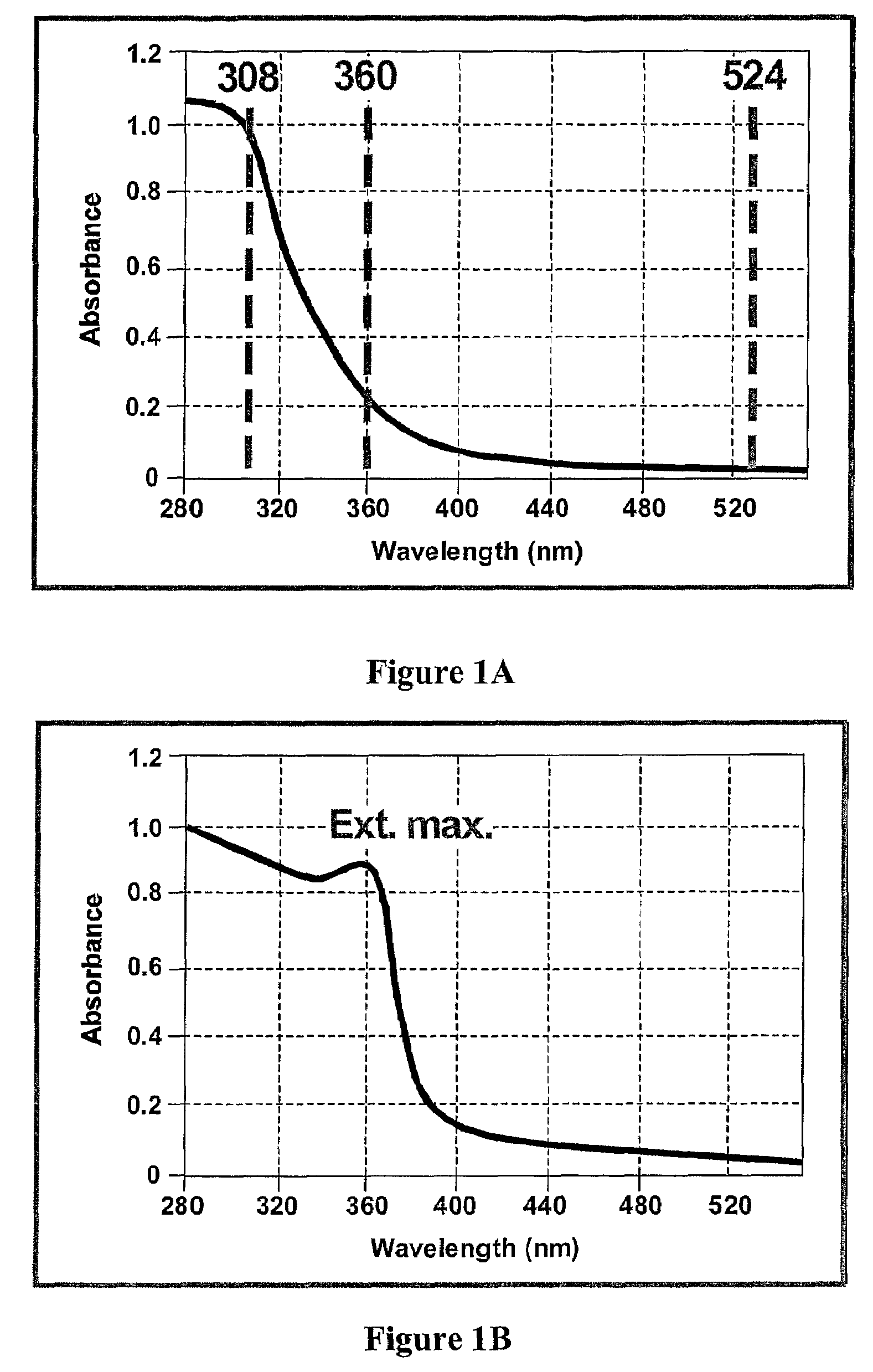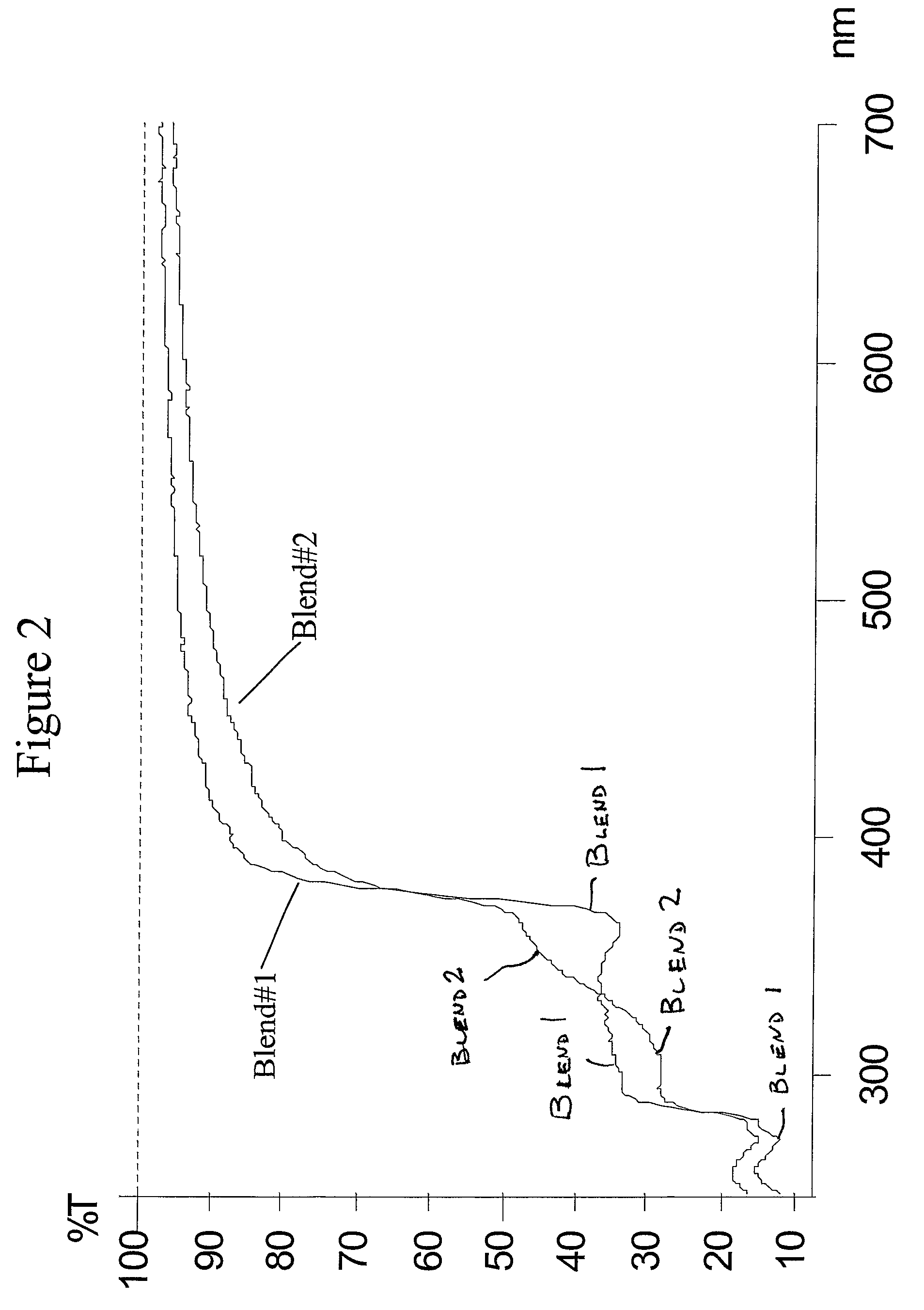Zinc oxide powder blends, their production and use
a technology of zinc oxide powder and powder blend, which is applied in the field of sunscreen products, can solve the problems of irritating the skin, blotching, freckling, wrinkling and comparable problems, and uva and uvb radiation reaching the earth's surface from the sun, and achieves good transparency to visible ligh
- Summary
- Abstract
- Description
- Claims
- Application Information
AI Technical Summary
Benefits of technology
Problems solved by technology
Method used
Image
Examples
example 1
Optical Properties of Metal Oxide Powders Useful as Sunscreens
[0122]Titanium dioxide and zinc oxide absorb / scatter ultraviolet and visible light. The scattering effect is dependent upon the particle size. Larger particles scatter longer wavelengths and the scattering of visible light results in the whitening effect observed for many sunscreen formulations that use relatively large sized metal oxide particles. Maximum scattering occurs when the particle size equals about one half of the wavelength (½λ) and the particles are uniformly dispersed.
[0123]A convenient way to express the UVB scattering effect of a metal oxide relative its whitening effect is to use the extinction ratio at 308 / 524, which is the ratio of extinction coefficients at 308 nm and 524 nm, where extinction coefficient=(absorbance) / (concentration*cell length). These wavelengths are conveniently selected because 308 nm corresponds to the UVB wavelength that has maximum erythemal effectiveness (promotes sunburn) and 52...
example 2
Comparison of Sunscreen Formulations
[0126]Two different metal oxide blends were formulated and compared as follows:
[0127]Blend 1. Blend 1 was made using a zinc oxide dispersion sold under catalogue number TNP50ZSI by Kobo Products, Inc. Catalog number TNP50ZSI contains 46.7% ZnO, by weight, having a primary particle size equal to about 20 nm. Blend 1 also incorporated a zinc oxide dispersion sold under catalogue number OHN73MZ by Kobo Products, Inc. Catalogue number OHN73MZ contains 70% ZnO having a primary particle size in the range between 15 and 35 nm.
[0128]Blend 1 was formulated to have an SPF of about 30 and protection against UV factor or PA of about 10. Blend 1 contained 19%, by weight, zinc oxide from catalogue number TNP50ZSI, resulting in a final concentration of about 9% ZnO having a 20 nm particle size, and about 21.3% ONH73MZ, resulting in a final concentration of about 15% ZnO in the 15-35 mm primary particle size range. The formulation was brought to 100% volume using...
PUM
| Property | Measurement | Unit |
|---|---|---|
| particle size | aaaaa | aaaaa |
| particle size | aaaaa | aaaaa |
| particle size | aaaaa | aaaaa |
Abstract
Description
Claims
Application Information
 Login to View More
Login to View More - R&D
- Intellectual Property
- Life Sciences
- Materials
- Tech Scout
- Unparalleled Data Quality
- Higher Quality Content
- 60% Fewer Hallucinations
Browse by: Latest US Patents, China's latest patents, Technical Efficacy Thesaurus, Application Domain, Technology Topic, Popular Technical Reports.
© 2025 PatSnap. All rights reserved.Legal|Privacy policy|Modern Slavery Act Transparency Statement|Sitemap|About US| Contact US: help@patsnap.com


